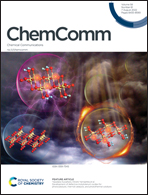Development of defective molybdenum oxides for photocatalysis, thermal catalysis, and photothermal catalysis
Abstract
The localized surface plasmon resonance (LSPR) of noble metals has been investigated for decades for applications in various catalysis reactions and optical research studies, but its development has been hampered by inefficient light absorption and high costs. In comparison, the creation of less expensive semiconductors (metal oxides) with strong plasmonic absorption is an appealing option, particularly defective molybdenum oxide (HxMoO3−y) has received considerable attention and investigation as a promising plasmonic material for a variety of catalytic reactions (photocatalysis, thermocatalysis, photothermal catalysis, etc.).The LSPR effect of HxMoO3−y can be tuned throughout a broad spectrum range from visible to near-infrared (NIR) by altering the doping amount by electrochemical control, chemical reduction, or photochemical control. Notably, defects (oxygen vacancies) in HxMoO3−y arise in conjunction with the LSPR effect, resulting in the formation of unique and useful active sites in a range of catalytic processes. In this review, we explore the formation mechanism of HxMoO3−y with plasmonic features and discuss its applications in photocatalysis, thermocatalysis, and photothermal catalysis.



 Please wait while we load your content...
Please wait while we load your content...
